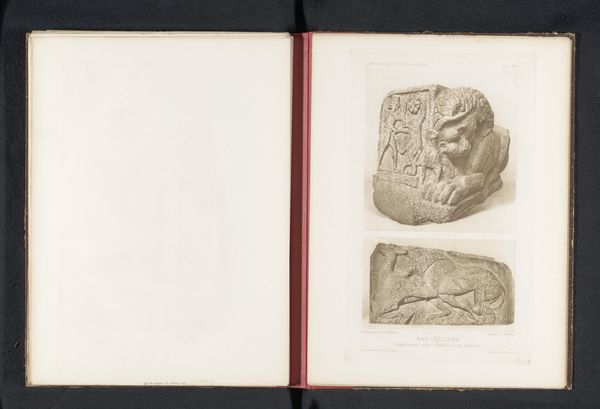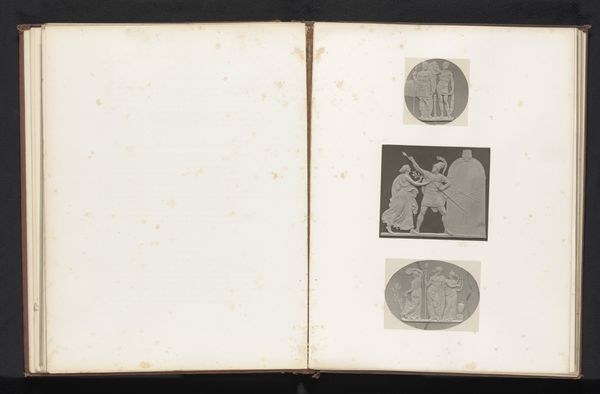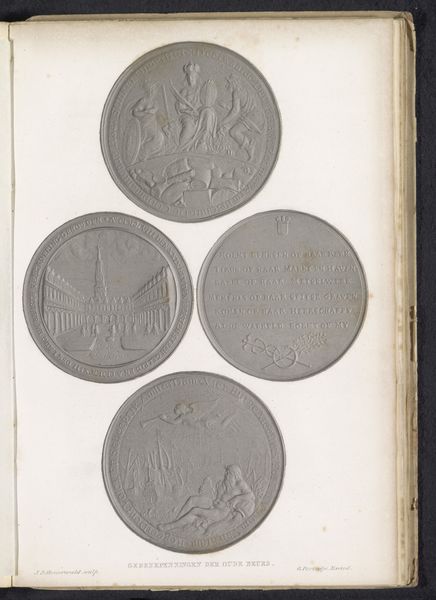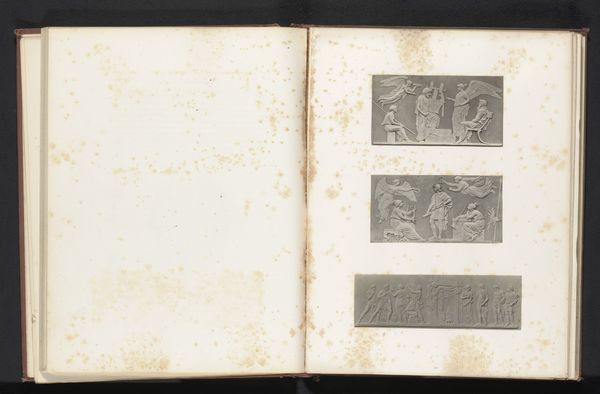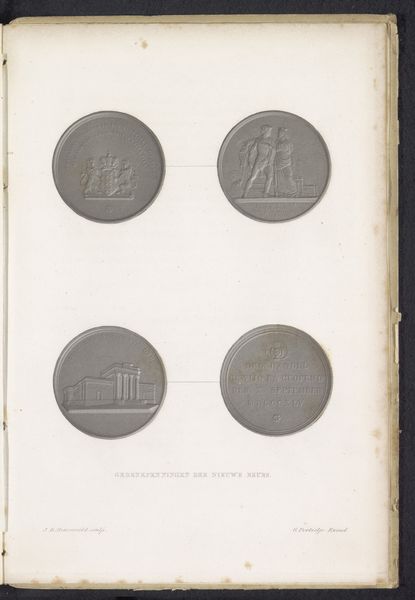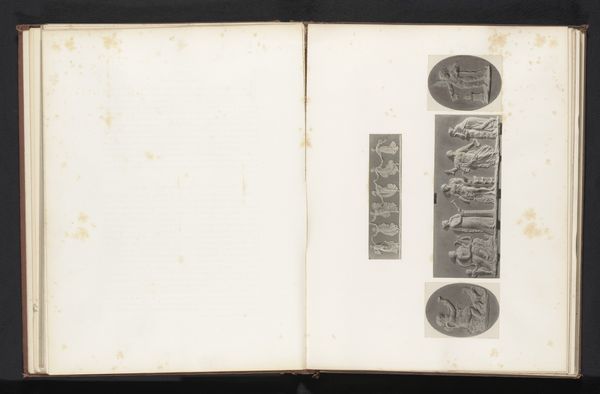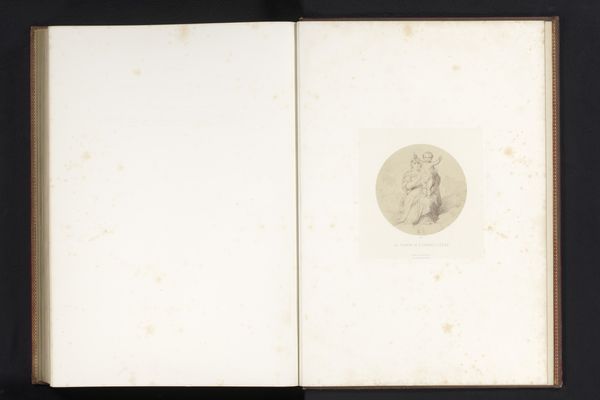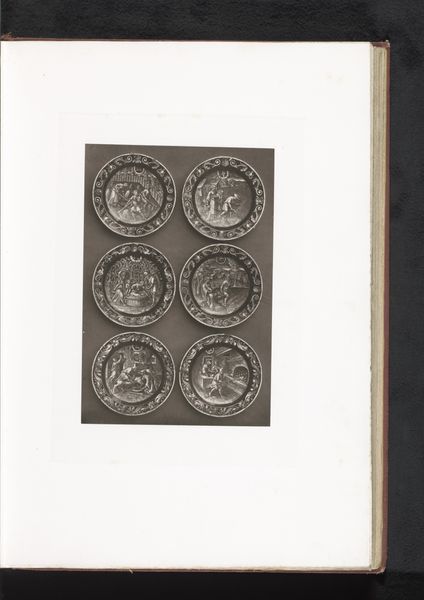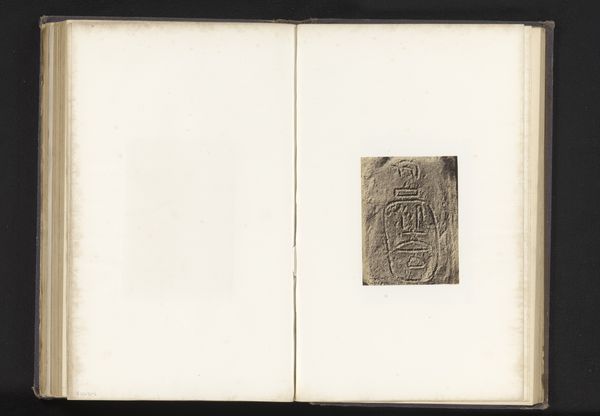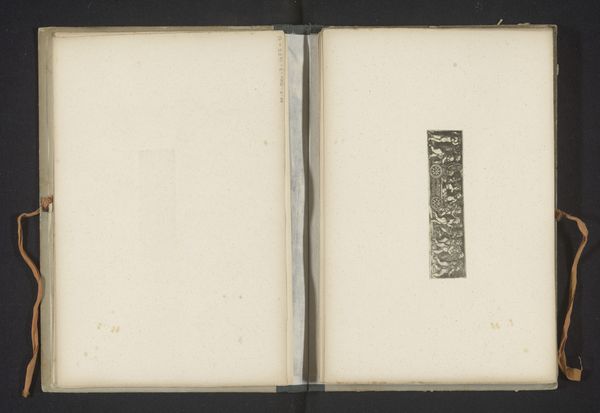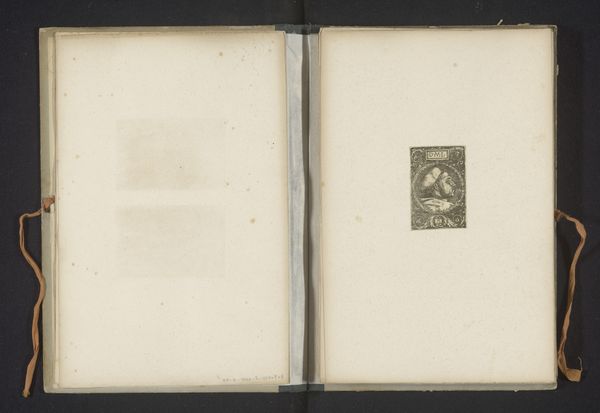
Bas-reliëfs van Psyche die wordt vastgebonden door putti, een feestmaal van de goden en de vriendschap die droefenis troost before 1873
0:00
0:00
drawing, print, relief, paper, engraving
#
drawing
#
allegory
#
neoclassicism
# print
#
relief
#
figuration
#
paper
#
history-painting
#
engraving
Dimensions: height 361 mm, width 270 mm
Copyright: Rijks Museum: Open Domain
Curator: Here we have a print from before 1873 attributed to Joseph Cundall. The piece, titled "Bas-reliefs van Psyche die wordt vastgebonden door putti, een feestmaal van de goden en de vriendschap die droefenis troost", features engravings of neoclassical reliefs on paper. They look like illustrations from a book. Editor: My first impression is one of subdued elegance, the monochromatic tones and classical subjects evoke a sense of solemnity despite the overtly sensual themes. It brings to mind academic settings. Curator: Absolutely. Considering its historical context, this work reflects the prevailing artistic taste for Neoclassicism, characterized by a revival of interest in classical antiquity and its emphasis on order, reason, and harmony. This print participates in that fascination, but in what institutional or political contexts was it seen? Editor: I wonder if the engravings, especially the one with the 'feast of the gods,' speak to power dynamics, especially for women like Psyche in a patriarchal system. Looking closer, the "bas-reliefs" aesthetic carries weight, reminiscent of the ancient world, while its circulation in print hints towards broader accessibility of these classic stories beyond the elite. It almost flattens a complicated lived reality. Curator: Interesting. The use of engraving is crucial, placing this artwork within a tradition of reproduction and dissemination of classical imagery, influencing popular taste and cultural values. We can also see how this particular representation of classical themes promotes certain notions of beauty, virtue, and social order. These images were not passive documents, but actively shaped social discourse. Editor: Definitely. It provokes considerations about gender, representation, and power. Looking at the "Bas-reliefs," I see coded patriarchal and misogynistic messaging in the disguise of Neoclassical artwork, making its message even more manipulative. I wonder, does it perpetuate inequalities by reinforcing specific gender roles? Curator: It could well be argued. These are not straightforward celebrations, they are cultural products enmeshed in social relationships. Joseph Cundall has indeed left us a work with endless layers of reflection on culture, gender, and institutional influences of his time. Editor: Precisely! The artwork really gives us insight into the ways people used history and allegory as a way of portraying themselves at that moment in time.
Comments
No comments
Be the first to comment and join the conversation on the ultimate creative platform.
